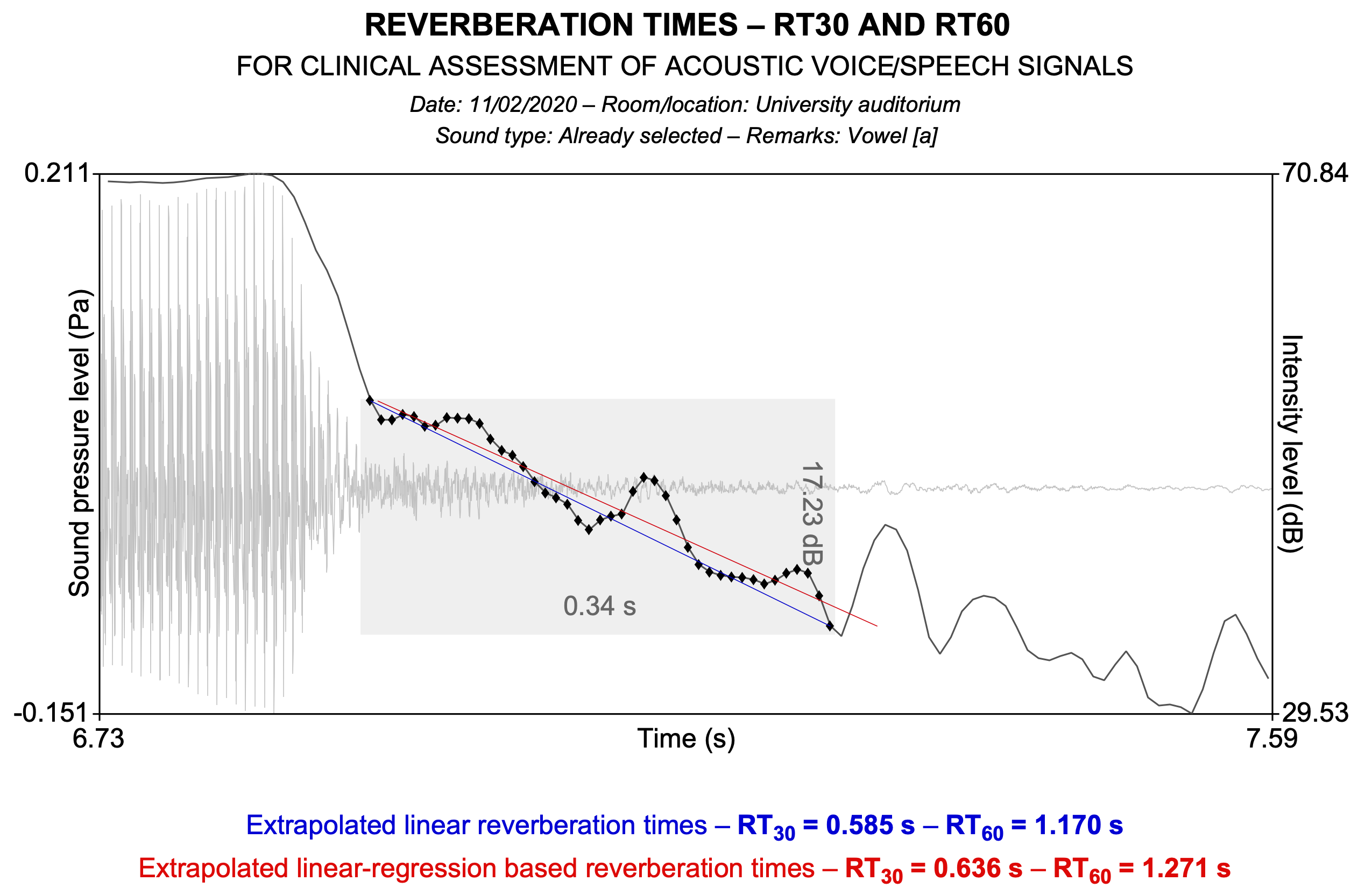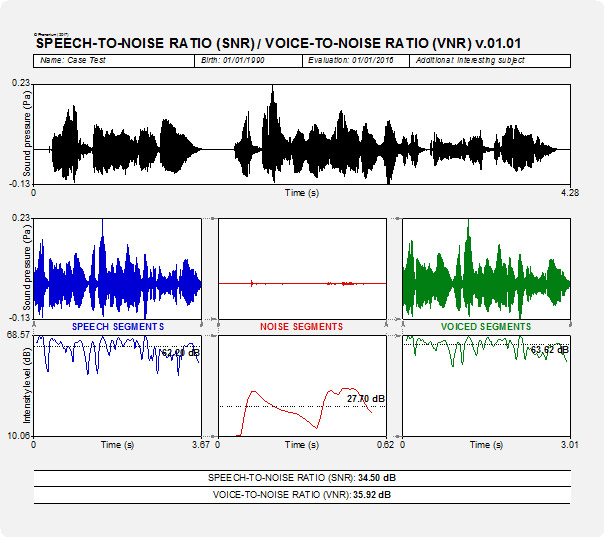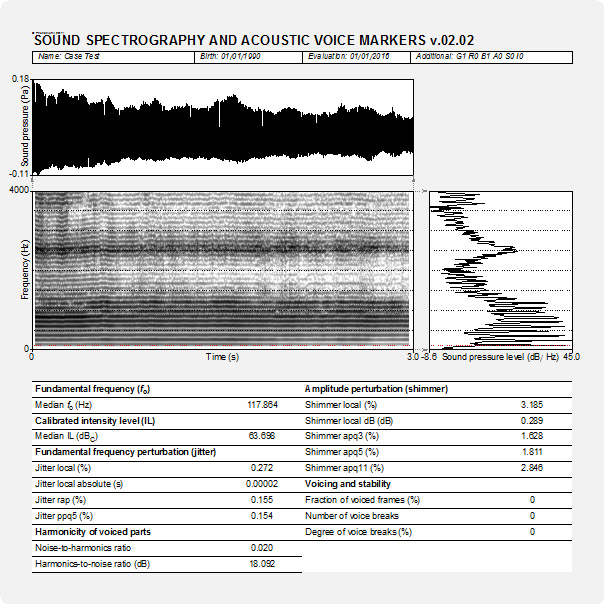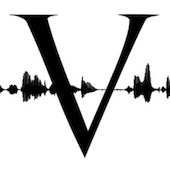Course assignments
Improving analyses … step by step!
Reverberation time
A plug-in for the program Praat has been developed to facilitate the measurement of reverberation times over 60 dB and 30 dB decays (i.e., RT60 and RT30, respectively). This tool is entitled ‘Reverberation time analysis v.01.01‘.
Assignment – Try out this tool to explore the reverberation in your clinical room(s).
Signal-to-noise ratio (SNR)
In Phonanium’s Clinical Voice Lab there is a plug-in entitled ‘Speech-to-noise ratio / Voice-to-noise ratio v.01.02‘ for the automated measurement of the signal-to-noise ratio (i.e., SNR) of audio recordings in voice/speech clinics.
Assignment – Use this tool to investigate the quality of your clinical voice/speech recordings.
Spectrographic voice/speech analysis
In Phonanium’s Clinical Voice Lab (CVL) there is a plug-in entitled ‘Sound spectrography and acoustic voice markers v.02.03‘ for the automated display of the frequency-domain across your acoustic voice/speech samples.
Assignment – Apply this tool to comment on and illustrate the vocal peculiarities of one of the sustained [a:] samples (coupled to your name; see below) during the course. Other tools of CVL may also be used to provide additional illustration of the sample’s specific feature(s).
Sample 1
F – 59 y – Bilateral vocal fold scarring (left: vergeture; right: mucosal bridge).
Sample 2
F – 59 y – Bilaterally reduced vocal fold abduction (paresis) post-chemotherapy.
Sample 3
F – 42 y – Normal vocal fold anatomy.
Sample 4
F – 73 y – Adductor spasmodic dysphonia with vocal tremor.
Sample 5
M – 10 y – Laryngeal mycosis.
Sample 6
F – 40 y – Adductor spasmodic dysphonia with vocal tremor.
Sample 7
F – 79 y – Unilateral vocal fold paralysis post-medialization laryngoplasty.
Sample 8
F – 50 y – Chronic laryngitis with leukoplakia.
Sample 9
M – 83 y – Unilateral vocal fold paralysis.
Sample 10
F – 8 y – Bilateral (pre-nodular) edema.
Sample 11
M – 77 y – Bilateral vocal fold atrophy and right vocal fold paresis.
Sample 12
F – 80 y – Unilateral vocal fold paralysis.
Sample 13
M – 8 y – Vocal fold nodules.
Sample 14
F – 47 y – Adductor spasmodic dysphonia with vocal tremor.





